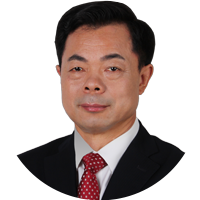JRMGE / Vol 16 / Issue 4
Evolution of mechanical parameters of Shuangjiangkou granite under different loading cycles and stress paths
Liangjie Gu, Xia-Ting Feng, Rui Kong, Chengxiang Yang, Yuelin Xia
Show More
a Key Laboratory of Ministry of Education on Safe Mining of Deep Metal Mines, Northeastern University, Shenyang, 110819, China
b State Key Laboratory of Geomechanics and Geotechnical Engineering, Institute of Rock and Soil Mechanics, Chinese Academy of Sciences, Wuhan, 430071, China
2024, 16(4): 1113-1126. doi:10.1016/j.jrmge.2023.09.005
Received: 2023-02-19 / Revised: 2023-07-01 / Accepted: 2023-09-04 / Available online: 2023-10-25
2024, 16(4): 1113-1126.
doi:10.1016/j.jrmge.2023.09.005
Received: 2023-02-19
Revised: 2023-07-01
Accepted: 2023-09-04
Available online: 2023-10-25
Surrounding rocks at different locations are generally subjected to different stress paths during the process of deep hard rock excavation. In this study, to reveal the mechanical parameters of deep surrounding rock under different stress paths, a new cyclic loading and unloading test method for controlled true triaxial loading and unloading and principal stress direction interchange was proposed, and the evolution of mechanical parameters of Shuangjiangkou granite under different stress paths was studied, including the deformation modulus, elastic deformation increment ratios, fracture degree, cohesion and internal friction angle. Additionally, stress path coefficient was defined to characterize different stress paths, and the functional relationships among the stress path coefficient, rock fracture degree difference coefficient, cohesion and internal friction angle were obtained. The results show that during the true triaxial cyclic loading and unloading process, the deformation modulus and cohesion gradually decrease, while the internal friction angle gradually increases with increasing equivalent crack strain. The stress path coefficient is exponentially related to the rock fracture degree difference coefficient. As the stress path coefficient increases, the degrees of cohesion weakening and internal friction angle strengthening decrease linearly. During cyclic loading and unloading under true triaxial principal stress direction interchange, the direction of crack development changes, and the deformation modulus increases, while the cohesion and internal friction angle decrease slightly, indicating that the principal stress direction interchange has a strengthening effect on the surrounding rocks. Finally, the influences of the principal stress interchange direction on the stabilities of deep engineering excavation projects are discussed.
Keywords: Triaxial cyclic loading and unloading test, Stress path, Deformation modulus and elastic deformation increment ratios, Fracture degree, Cohesion and internal friction angle
Article Data
Author(s) Information
Prof. Xia-Ting Feng
xtfeng@whrsm.ac.cn
fengxiating@mail.neu.edu.cn

Prof. Xia-Ting Feng received his PhD degree at Northeastern University of Technology (now Northeastern University since 1993), China in 1992 and then took the position of lecturer, associate professor and professor at the same university. He joined Institute of Rock and Soil Mechanics, Chinese Academy of Sciences (CAS) in 1998 as a Professor of Hundred Talent Program of the CAS and as Deputy Director in Charge and Director in 2001–2005. He has worked as Director of State Key Laboratory of Geomechanics and Geotechnical Engineering since 2007. He works at Northeastern University, China as a Vice President since September 2017. In February 2021, he became president of Northeastern University. He is President of Federation of International Geo-engineering Societies−FedIGS, President of International Society for Rock Mechanics (ISRM) Commission on Design Methodology, member of ISRM Commission on Testing Methods, and President of Chinese Society for Rock Mechanics and Engineering (CSRME). He was the past President of ISRM 2011–2015. He is also Editor-in-Chief of Journal of Rock Mechanics and Geotechnical Engineering (JRMGE), and Associate Editor-in-Chief of Chinese Journal of Theoretical and Applied Mechanics. He is member of Editorial Board of Rock Mechanics and Rock Engineering. His research interests cover rock mechanics for deep rock engineering. He published more than 200 technical papers and the English books “Rock engineering design” and “Rock engineering risk” with Professor John Hudson. He has edited five volumes of the book “Rock mechanics and rock engineering” (CRC Press) and the book “Rockburst” (Elsevier).

